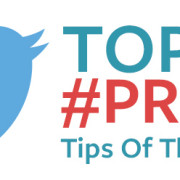8 Ways To Persuade Your Boss To Embrace Social Media
The following is a fantastic post that originally appeared on PRDaily.com.
Not every CEO should be online—and few of them are embracing social media, according to a report by CEO.com and Domo.
The report found that only 9 out of 19 Fortune 500 CEOs registered with Twitter were active (a tweet within 100 days of the survey), a mere two CEOs had more than 500 friends on Facebook, and zero Fortune 500 CEOs were on Pinterest.
I have been fortunate to work directly with CEOs who are social offline. They are charismatic, well spoken, and lifelong members of the nonprofit fields that they oversee. However, neither of these CEOs had an online presence worth sharing.
So how do you take an engaging figure and bring them online?
Here are eight tips to help you:
CONFRONT PHOBIAS
CEOs, presidents, and members of senior management can have phobias regarding social media. If you’re lucky, they have private accounts and have a sense of the various forms of communication.
Regardless of their experience, you must further educate them about the benefits and risks of pursuing this form of communication professionally. Find and share accounts of other CEOs. Encourage your senior leaders to follow these conversations and show how they drive support for an organization. It is easier to overcome a phobia when someone else is leading the way.
EXPLAIN THE IMPORTANCE OF PERSONALITY
Teach your senior leaders the importance of adding personality to their online image. They must be comfortable with sharing some emotions or reactions publicly if this is going to work. If they cannot agree to take sides on issues that are relevant to your mission then this may not be the mode of communication for them.
FIND AN OUTLET
Just as you decided which social media resource was appropriate for your organization, there is not a standard platform for CEOs. Discuss goals, time commitments, a support network, approval process, and personal interests with your CEO.
Some CEOs are more suited for the brevity of Twitter, while others require a blog to state their views. If your CEO prefers photos of his work, you might consider Tumblr or an Instagram account like Zappos CEO Tony Hsieh.
TRAIN AND EXPLAIN
Once you’ve agreed upon a social media platform, both of you must commit to training. Set aside time for one-on-one tutorials, behind closed doors to protect any egos. Supply draft posts for review until your CEO—and you—feel comfortable sharing them publicly. Remember that social media training should be a continuous learning experience.
DEVELOP UNIQUE ANGLES
Some CEOs may think they don’t have any updates to share. Impress upon them that this is about providing insight into their character as well as enhancing the organization’s brand. Your CEO has a unique view of your organization and can provide an insight that can assist with a goal of transparency.
SHOW YOUR DIRTY HANDS
Social media is the perfect opportunity to shatter the image of a stuffy CEO stuck behind a desk. I frequently shadowed my CEOs when they ventured from the office—which was often—to photograph them engaging in our missions and gather information for future posts. Above all, the ensuing updates demonstrated the connection between the organization’s leader and the mission our followers supported.
STRESS THE 24/7 NATURE OF SOCIAL
Your CEO should be available to answer questions from the public and participate in dialogues. If you are ghostwriting for your CEO, he or she may need to become accustomed to approving posts that you run by them day or night.
FORGET LEGAL
Unless the legal department reviews all of your posts as part of your social media policy, trust your CEO just as he or she trusts you. Your process should determine the level of review you will need to perform. If you ghostwrite the posts based on discussions then a quick review with your CEO is appropriate.
Brian Adams consults with nonprofits, including Komera Project, regarding communications strategy. I am the former senior director of communications at United Way of Massachusetts Bay and Merrimack Valley. A version of this story first appeared on the author’s blog.











Leave a Reply
Want to join the discussion?Feel free to contribute!